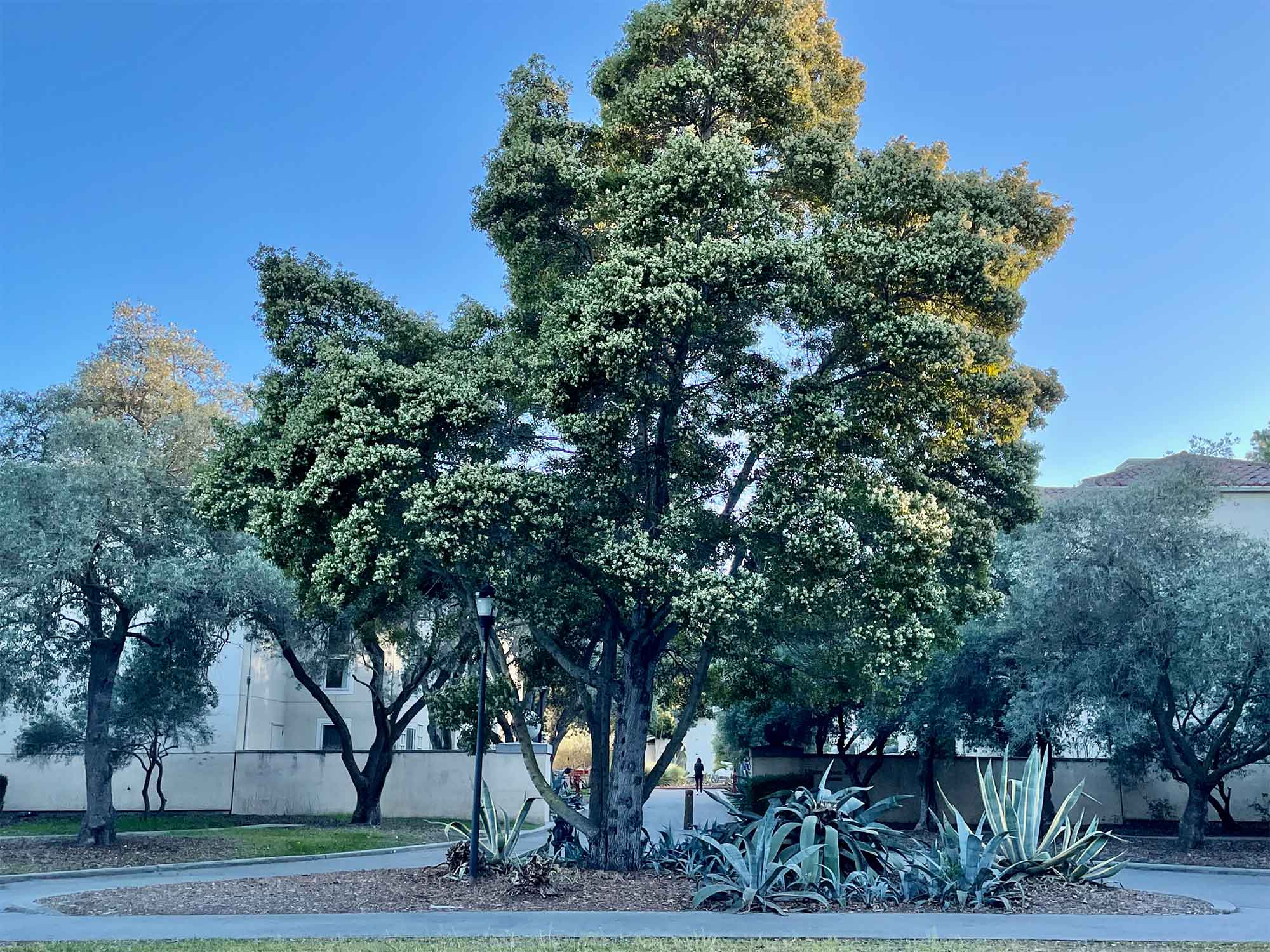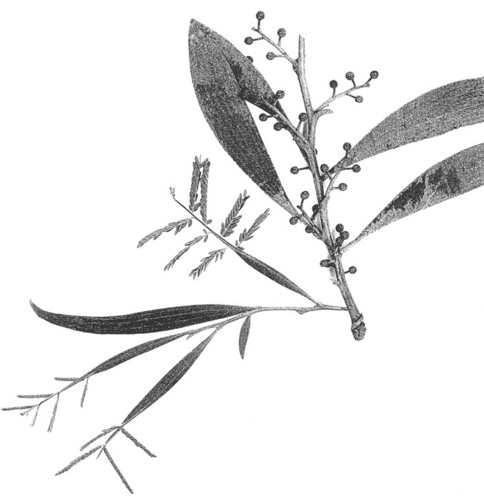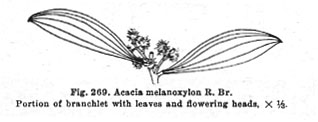Acacia melanoxylon
 blackwood acacia
blackwood acacia


A substantial tree, often seen more than 50 feet tall and with a trunk more than a foot in diameter. The flower display in March is occasionally impressive but may go unnoticed as the pale cream color is not striking. Generally speaking, blackwood acacia dispenses with leaves, clothing itself with matte gray-green phyllodes 3 to 6 inches long with pronounced parallel venation, but seedlings and young sprouts from the trunk often exhibit feathery leaves emerging from the phyllodes in a very surprising way. The numerous pods are often a conspicuous feature of the tree. If examined, they will reveal shiny black seeds ringed by a red horseshoe-shaped umbilical cord that can be used as a tow-rope by ants.
It can be seen at the intersection of Lomita and Lagunita drives at Kingscote Gardens. An impressive specimen around 80 feet tall is on the lawn opposite 60–70 Pearce Mitchell Place. Two large ones are between Muwekma-Tah-Ruk and Columbae. Numerous others are to be found in the older residential area, for example near the intersection of Cabrillo Avenue and Santa Ynez Street, and on Hanover Street, Palo Alto (2010, 2151, 2301, 2349). Blackwood acacia is being planted on campus once again, after a gap of decades: see five lining the Campus Drive sidewalk on the southeast corner of Manzanita Field, planted in 2022. The reputedly tallest blackwood acacia in the United States in Kohee State Park, Hawaii, reached 78 feet some years ago. We may have overtaken it.

The tree was much admired by John Muir while exploring around Melbourne in 1903–1904. The wood, which is of teak quality and very dark but variegated, is produced commercially. At Stanford, where blackwood acacia volunteers regularly, valuable wood for turning and hobby use is occasionally available from trees that have sprung up where they were not wanted. A. redolens, reported from Ongerup, Western Australia, in 1964, resembles A. melanoxylon but has bright yellow flowers and is used as a spreading ground cover on campus, for example on the steep banks of Lathrop Drive and on the dry, steep dividing strip from 749 to 773 Mayfield Avenue.
Name derivation: Acacia – Greek akis, a sharp point; melanoxylon – with black wood.
About this Entry: The main text of this entry is from the book Trees of Stanford and Environs, by Ronald Bracewell, published 2005. Manzanita Field location added; Building 520 location removed; Hanover locations edited (Jul 2023, SP).




